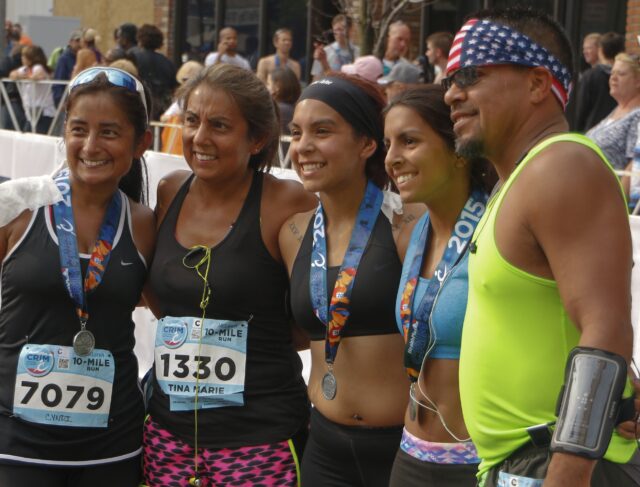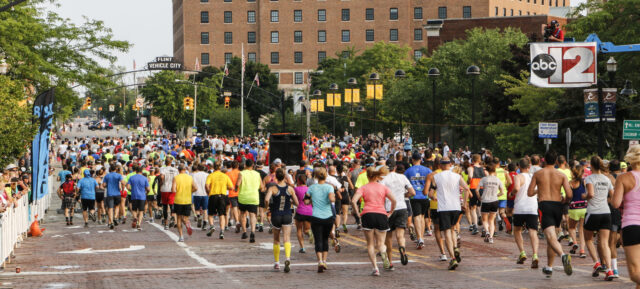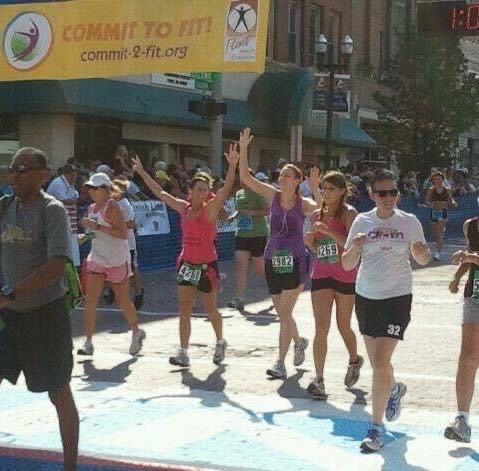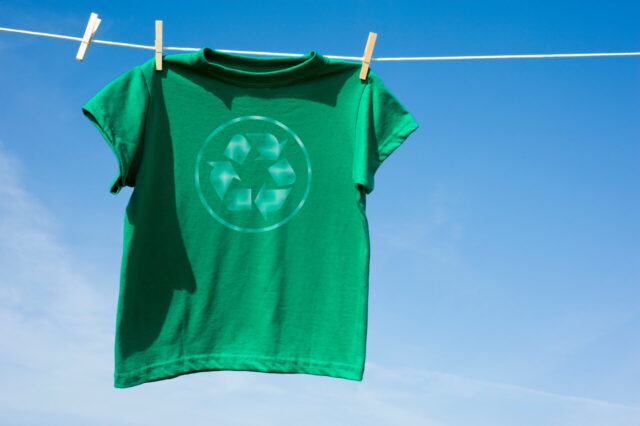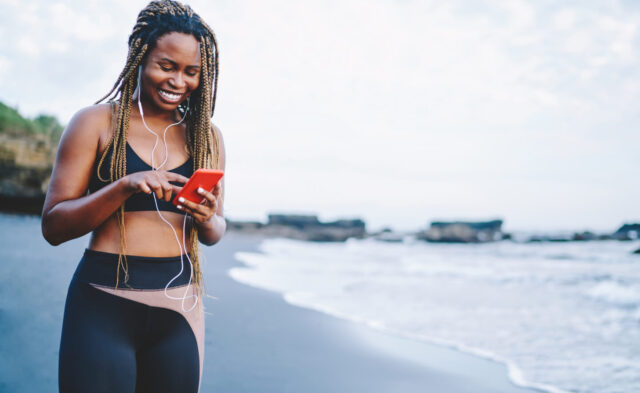Participant Equity at the HAP Crim Festival of Races
Staff and participants of the iconic race in Flint, Michigan share their personal stories in our four video, article series
FLINT, MICHIGAN - After 46 years of its existence, the HAP Crim Festival of Races weekend has not only become a local holiday in Flint, Michigan, but it is a celebration of Flint’s perseverance. “The Crim,” as it’s known, is one of the biggest events of the summer in Flint, Michigan. Ten thousand runners, walkers, wheelchair racers and other athletes come out for the 10-mile, 5 mile, 5K, one mile and kids’ races during this weekend in late August.
Flint, Michigan is known internationally for its contaminated water crisis. They’ve had a boil filtered water advisory that started in 2014 and was not lifted until February of this year.
One of the positive side effects of the water crisis was new health and wellness programs - initiatives that had not been a focus in Flint previously. The Crim was an obvious partner. In addition to producing the August race weekend, The HAP Crim Fitness Foundation works year-round to provide programs for adults, seniors and children that include access to nutrition, mindfulness training and exercise.
“It's been nine years since the water crisis began, and there’s still that fear,” said Liz Jones, HAP Crim Associate Director of Races and Training.
As an example, she recently had a sixth grader in one of her programs ask her what would happen to him if he were to take 20 showers.
“I was confused by that at first. Then I realized the problem: he's scared about being in the water and what damage the water could do to him. That's still a very relevant fear for a lot of people here in Flint,” Jones explained. “This is an already underserved population and now they are recovering from a pandemic on top of the lingering water crisis issues.” (Watch Liz Jones' video.)
“Overcoming barriers to participation has been a focus of the Crim staff for some time, but it has become a heightened priority in the last few years,” says Lauren Holaly-Zembo, HAP Crim Fitness Foundation CEO.
“As a race, we're telling people to run or walk or be active, but we know if they don't have the place or the means to do that, they're not going to. So we have to really look at addressing all of that in what we do,” Holaly-Zembo said.
(Watch a video with Lauren Holaly-Zembo.)
“The reality that the founding of this race that was based on inclusion and it started to raise money for Special Olympics and athletes with special needs. And we've continued to do that throughout our history,” Holaly-Zembo said.
The Crim was founded by longtime Michigan politician Bobby D. Crim, who served in the Michigan House of Representatives in the 1970’s and 80’s. He ran his last 10-mile race, his 45th straight, at the 2021 event.
"The community is the Crim, the Crim is the community," Crim said in a 2016 interview. "Almost everything from education to fitness ..goes through the Crim. We were a race, but now we're much more than a race.” Today, that vision has expanded to include runners and walkers who may never have been able to participate in the past.
Running USA recently had the chance to speak with several runners who have been trailblazers in the Crim’s inclusivity efforts. Here are their stories.
Father Time: A wrestler and a walker
Father Time is his wrestling name. Yes, you heard that right. His birth certificate, however, says Leo Napier. Due to his vision impairment, he does not have a driver’s license, but that doesn’t hold him back from much else.
“The Father Time character has inspired a lot of people. When I was 60, that's when I started professional wrestling, I'll be 71 years old this year.” Napier told us.
The story of Father Time’s wrestling career is documented in a powerful long form story from BELT Magazine by writer Scott Atkinson. An especially moving paragraph is this one:
“He’d spent his whole life trying to wrestle, but things continually got in the way. Things like cancer in his digestive system when he was still in his twenties and was trying to make contacts with wrestling organizations. About ten years later he tried again but was rear-ended while driving and hurt his back and neck. He was a father then, and life was simply busier. Around age 50, he started thinking about it again, and he had a stroke. And then another. And a third. He’d been a power lifter his entire life and was still bench-pressing more than 350 pounds at the time, but after each stroke he felt weaker and weaker. After his third stroke he heard the doctor say to his wife, ‘I can see that he was once a strong man.’”
Father Time recalls his daughter running the Crim a few years ago, and feeling like it was “a little bit of a strange thing to do.” Stranger than beginning a pro wrestling career at 60? Probably not.
Now vice president of the Flint/Genesee chapter of the National Federation of the Blind, he was recruited by his friend Sheila Fulmore to join the walking team this year.
“We look at it as we can overcome any obstacle that's put in our way. All we have to do is just have the fortitude and the grit to do it. When (sighted people) see that we can do this, too, it changes a lot of minds and a lot of hearts,” Napier said.
(Watch the video to hear more of Father Time’s story.)
Access for Deaf Runners and Walkers
Kid Black Fedio is a Deaf advocate, lifelong teacher of American Sign Language and for the past six years, a run/walk group leader for the Crim. She was looking for a winter activity to keep active and ended up expanding the deaf community’s access to Flint’s largest running event.
“We ended up having more than 30 participants our very first year. This summer, we already have more than we had last year. It's a huge thing. People love it. I love it. It's great to all be included,” she said.
Feedback she received from last year’s Deaf participants was this:
“They felt that they were not brushed aside. They told me that if you provide the access for us, we will show up.”
The most important part of true accessibility, Fedio explained, is authentic inclusion. It’s also vital to for events to consider expanding their signage pre-event, on course and post-event, so that those with hearing loss are able to successfully navigate the course and venue. If possible, consider bringing in an ASL interpreter for any main stage announcements or speeches made at the event.
For training inclusivity, Fedio recommends being proactive in bringing on group leaders who can relate to the runners and walkers.
“If you let a Deaf person lead, it is going to be more successful. I would try to recruit a Deaf adult that is familiar with this, or a pair, a Deaf adult and a hearing person, and have them lead the group. And then it will fly.”
(Watch the video to hear more of Kid Fedio’s story.)
There’s No Stopping Sheila Fulmore
Sheila Fulmore is the President of the Flint/Genesee chapter of the National Federation of the Blind (NAFB). When she first participated in the Crim 5K last year, she surprised even herself.
“When we got to the middle, I was like, ‘Oh, I can't do this.’ And I just wanted to stop.” She’d been told to just put one foot in front of the other until she reached the finish, but her body was tired.
Encouragement from a stranger on the course helped.
“This gentleman came up behind me and said, we are almost there. Let’s go. I just wanted to him to get me a ride to the finish line. But he walked with me a bit and got me going. It was going through my head that I really don’t give up.” So she didn’t.
“I finished it. And that inspired me to go, you know what, they have a training program, we should get in that program.”
She is now a leader of the Crim’s visually impaired runner/walker group, with 12 members of the NAFB chapter participating this August and the hope that many more will join. Her advice to this year’s first-time participants?
“Just remember that you want to finish. Don’t get hung up on your time. I don't want that to be a factor. I want you to have fun. I want you to socialize, I want you to get out and I want you to just walk.”
(Watch the video to hear more of Sheila’s story.)
The 46th HAP Crim Festival of Races will take place Friday and Saturday, August 25 and 26. Learn more at https://crim.org/.
**
Share your event stories with us: Running USA encourages event and vendor members to share their stories of success with us. Email Leah Etling, director of marketing and communications, to learn more.
